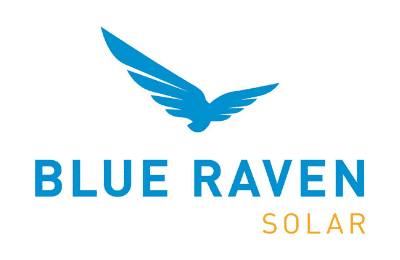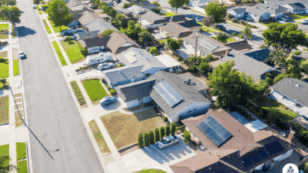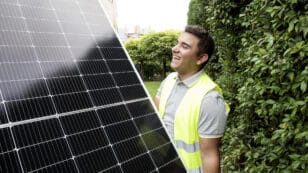
Is Solar Worth It in Colorado? (2024 Homeowner's Guide)
Here’s a quick overview of solar viability in Colorado:
- Colorado ranks 12th in the country for solar installations.*
- The average electricity rate is 14.22 cents per kWh**
- The average solar payback period is 13 years.***
- Homeowners are eligible for a great Solar Renewable Energy Credit (SREC) program and the federal solar investment tax credit (ITC)
- The average homeowner saves $18,300 over the lifetime of their solar system***
*According to the Solar Energy Industries Association.1
**Data from the Energy Information Administration.2
***Calculated assuming the system is purchased in cash.
Each product and or company featured here has been independently selected by the writer. You can learn more about our review methodology here. If you make a purchase using the links included, we may earn commission.
Colorado is one of the most popular states for solar conversions, ranking 12th overall for solar adoption. However, with the average price of $26,400 for solar panels — or $18,480 after the federal tax credit — in the state, many homeowners wonder if going solar will ultimately save them money and benefit them after installation.
Figuring out if solar is right for you and your home is a surprisingly complicated process that involves several factors.
Below, you’ll find an in-depth guide on how to carry out your own expense analysis to see if you’ll benefit financially from going solar in your Colorado home. We’ll also discuss the many benefits of installing solar panels and the things you should consider before converting to this clean energy solution.
To speak with an EcoWatch-vetted professional who can help you determine whether solar is worth it for your Colorado home, follow the links below.

Blue Raven Solar
Pros
- Industry-leading in-house financing
- Competitive pricing
- Excellent reputation
Cons
- Doesn't offer solar batteries (coming 2022)

Blue Raven Solar
Pros
- Industry-leading in-house financing
- Competitive pricing
- Excellent reputation
Cons
- Doesn't offer solar batteries (coming 2022)

Freedom Solar Power

Regional Service
Average cost
Pros
- Outstanding customer service
- Representatives are experts on local policies
- Great warranty coverage
- Offers products from leading manufacturers
Cons
- Expensive
- Limited service offerings
- No leases or PPAs
Watch Below: Learn How Colorado’s Incentives Make Going Solar More Affordable
How to Figure Out if Solar Panels are Worth It in Colorado
Given the abundance of sunlight Colorado receives and the average price of solar equipment throughout the state, converting to this renewable energy solution will be worth it for most CO homeowners. However, it’s not right for everyone, so we’ll discuss some things that will affect how valuable solar panels can be for your home below.
What’s Your Home Electricity Consumption?
Not all solar power systems are the same size, and the kilowatts installed will depend primarily on how much energy you use on a monthly basis. Panels are also priced based on the system size — averaging around $3.52 per watt in Colorado — so your energy needs are a crucial factor to consider all around.
Solar panels are generally not as valuable for homeowners who use fewer than 500 kWh per month because the energy savings won’t be as plentiful. The average household in Colorado uses about 711 kWh monthly, which means most homeowners will benefit from going solar.
You can check your past energy bills for your average consumption to see if solar makes sense based on your electricity usage.
How Much Is It To Go Solar in Colorado?
Colorado homeowners pay an average of $3.52 per watt for solar panels. Since the typical system size required to offset energy bills in the area is around 7.5 kilowatts, the average price for solar in Colorado overall is about $26,400 or $18,480 after the federal tax incentive is considered.
Generally speaking, solar panels are worth more in areas where electricity is expensive and energy bills are high. Coloradans pay around 11.36 per kilowatt-hour, which is below the national average, and consume around 711 kWh monthly, which is also below the national average of 893.
As such, solar panels are a bit less valuable in Colorado than they would be in a state with higher electricity prices and usage.
What’s the Payback Period for Solar in Colorado?
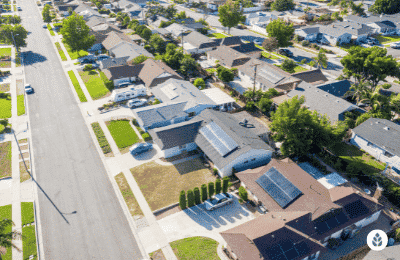
In Colorado, the typical time it takes for your panels to pay themselves off is around 13 years, and most homeowners in the state have an estimated payoff period between 10 and 16 years. For comparison, the national average is between 9 and 15 years.
We recommend using a solar calculator or having a reputable solar installer in your area assess your home and estimate what your payback period will be.
Your panels will almost always generate a return on investment (ROI), but if your timeline is longer than 16 years, your ROI will be lower than average and it will take longer for the panels to pay themselves down.
What Are Average Buy-Back Rates in Colorado?
Many states have an energy buy-back program or a statewide net metering policy that requires utility companies to purchase any energy you produce with your panels above and beyond what you use. Essentially, these programs help offset and even eliminate electric bills, making your panels far more valuable and bumping up your expected return on investment in states where net metering is available.
Colorado does mandate net metering, but the specific policy varies between electricity providers. Some credit your energy bill at the retail rate for every kWh you overproduce, while others use a lower rate. Both are helpful, but those with a sub-optimal net metering program might want to add a solar battery to their system to help keep energy rates down.
How Much Sun Does Your Roof Receive?
Solar panels are only as valuable as the sunlight that hits them and gets converted into energy, so the more sun your property receives, the more likely it is that solar panels will be worth it for your home. Colorado is the sixth sunniest state in the entire country, with residents enjoying an incredible 300 sunny days every year.3
As such, most homeowners will benefit more from installing solar in Colorado than in other states in this regard. Still, there are individual factors to consider as well that are property-specific.
The 300 days of sunlight are great if your panels receive it, but you’ll produce almost no energy if you have heavy shading on your roof from trees or nearby buildings. Additionally, solar panels are most effective when they face the path of the sun in the sky, which means south- and west-facing roofs will be a better fit for solar energy systems.
What’s the Outlook on Solar in Colorado?
Colorado residents often worry that the immense amount of snowfall — over 67 inches annually — will impede solar production. When your panels are covered in snow, production will be low or non-existent, but the snow melts quickly in most populated areas in Colorado and will actually serve to keep your panels clean for those sunny days.
Overall, solar is quite popular in the Centennial State, and residential and utility-scale solar have grown year-over-year for most of the past decade. Colorado was one of the first states to adopt a Renewable Portfolio Standard (RPS), and the state as a whole is engaged in energy conservation and sustainability.
It’s very likely that solar will only continue to become more prevalent, affordable, accessible and valuable in Colorado in the coming years.
Benefits of Solar Energy in Colorado
Going solar is hugely beneficial for most homeowners in Colorado, but some homeowners don’t realize where the financial savings and environmental benefits come from. We’ll discuss the most significant upsides to solar panel installation in Colorado below.
Electricity Bill Savings
It probably comes as no surprise that one of the most substantial financial benefits of going solar is the savings you’ll enjoy on your electric bills.
Coloradans pay an average of $101.10 per month for electricity, so eliminating your energy bills with solar panels could save you over $1,200 every year your system is functioning. Over the lifespan of your system — estimated at 25+ years — that comes out to a typical savings of $18,300 after the solar panels pay for themselves!
In addition to the savings you’ll enjoy, installing panels also makes you less dependent on your utility company, which means you won’t have to pay the high per-kWh rates it sets, and you can better plan and budget with a rate that won’t change. This is especially crucial because energy rates have continued to rise throughout history and are expected to continue doing so.
Lower Taxes & Access to Other Incentives
The federal government and the State of Colorado both incentivize solar conversion to promote clean energy, so going solar will also give you access to tax incentives, rebates and other benefits.
The most significant incentive you’ll receive — if you use cash or a solar loan to buy your panels — is the federal solar investment tax credit (ITC), which is a credit to your federal income taxes for 30% of your total system expense. In Colorado, that’s an average credit of $7,920!
Other solar incentives available in Colorado are listed below:
- Net Metering: Helps homeowners offset electricity rates and eliminate their energy bills
- Property Tax Exemption: Prevents your property taxes from going up when solar panels boost your home value
- Sales Tax Exemption: Prevents you from having to pay sales tax on your solar equipment
- SREC Program: Provides a cash incentive for producing energy with your solar panel system
Home Resale Value Increase
Many property owners don’t realize that solar panels will increase their home’s value, which is a massive benefit that should not be overlooked. Data from Zillow suggests that solar panels bump up property value by approximately 4.1%.4
Given the average home value of $528,285 in Colorado, that’s a typical value increase of around $21,659.5 The value could jump even more in areas with higher home values, like Denver, Boulder, Aurora, Fort Collins and Colorado Springs.
The increased home value coupled with the Property Tax Exemption means you’ll enjoy a more valuable home without having to pay property taxes on the added value.
Clean, Renewable Energy
Not all solar incentives are financial, and those homeowners who are more interested in saving the environment than saving money will also benefit immensely from going solar. Converting to clean energy will reduce your carbon footprint, air pollution, water pollution and your reliance on fossil fuels.
You’ll also enjoy energy independence, which means you won’t be subject to the same hikes in electricity rates that other homeowners will in the future.
What to Look Out For When Considering Solar in Colorado
Confirming that going solar is worth it for your home is really just the first step in your solar journey. There are many additional things you’ll need to think about when choosing a solar panel installation company and moving forward with the conversion process.
Below are some additional considerations you’ll want to make for your home solar project.
Upfront Fees
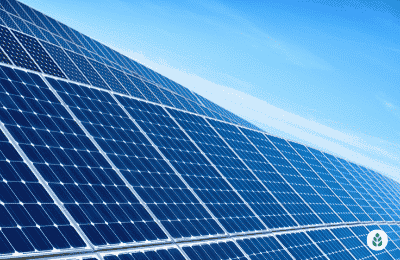
However, you can reduce your upfront total by opting for cheaper solar panels, financing with a no-money-down loan and limiting your solar system to panels by avoiding adding batteries or electric vehicle chargers.
Payback Period
As mentioned above, your estimated payback period for your solar panels is a great way to determine if solar is right for you. However, it can also be used for budgeting and planning purposes.
You can use a solar calculator or have a professional installation company in your area estimate how long your payback period will be. This will give you an idea of when your panels will be paid off and will start providing you with real savings.
Remember, you’ll still likely save if your payback period is longer than 16 years, but your ROI will undoubtedly be lower than the average $18,300.
Net Metering Policies in Colorado
Net metering is a great way to reduce your energy bills, maximize your long-term solar savings and speed up paying off your solar panels.
Thankfully, net metering is mandated in Colorado, but the specific policy varies between utility companies. The actual buy-back numbers aren’t a make-or-break factor by any means, but the best net metering programs — like the one from Xcel Energy — will provide greater savings overall.
We recommend you check with your provider before signing anything, and remember that you can add on solar battery storage to help reduce energy fees if your net metering program isn’t the best.
Pending Policies & Changes to Incentives
The solar industry continues to grow throughout the country, and in areas like Colorado, where the renewable energy source is prevalent and only becoming more popular, policies and incentives can change at any time.
While it’s not advisable to wait for better incentives to come along, you should check with your utility provider, your solar installer and the DSIRE database for any updates to policies, incentives or rebate programs.6
Weather & Climate in Colorado
Some homeowners in Colorado worry about the well-above-average annual snowfall in the state, as accumulation will block sunlight from reaching their panels.
While snow will reduce your panels’ efficiency, the abundant sunlight throughout most of the year in Colorado still makes solar worth it for most homeowners. Others are concerned about hail, which is a common extreme weather condition in some parts of CO, but hail very rarely damages residential solar panels. If you’re concerned, you can opt for a solar installer or equipment brand that offers a robust physical protection warranty.
Additionally, some homeowners wonder about how the cold winters in Colorado will affect their power production. As long as there is sunlight, your panels will continue to generate electricity, even in the cold. In fact, electricity travels more rapidly in the cold, so you might see improved efficiency in the winter.
Companies Pushing Solar Leases or PPAs
Your last consideration should be the solar panel installation company you choose, but this is by no means the least important thing to think about. Given the popularity of solar in Colorado, there are many companies popping up that aren’t very reliable and won’t provide the same service as those that have a better reputation in the industry.
Some companies push “free solar panels,” which is typically just a marketing scheme to get you to sign a solar lease or power purchase agreement (PPA), neither of which is advisable. These options don’t bump up your home value, don’t let you take advantage of the federal solar tax credit and provide a much lower ROI — if any at all — than cash purchases and financing would.
KKTV 11 News has reported about solar scam companies in Colorado Springs that claim to be affiliated with local utilities and really just get customers to sign less beneficial solar leases.7 Denver 7 ABC has reported similar scams in Aurora and the surrounding areas.8
We strongly recommend choosing a reputable and vetted company to avoid scams and issues with your installation.
Wrap Up: Is Solar Worth it in Colorado?
Colorado ranks 13th in terms of solar-friendliness and adoption, and with the 300 sunny days per year enjoyed by residents, going solar is worth it for most homeowners throughout the state. However, it’s not a perfect fit for everyone.
You’ll need to consider your monthly energy bills, shading on your property, the direction your roof faces, your financing options, your panel payback period and much more to determine if solar is right for you. There are quite a few benefits of going solar, but you should be careful not to get enamored by the allure of savings and dive into the conversion process.
You should first consider what the price of the panels is, how long it will take for them to pay themselves off and whether the total expected return on investment makes conversion a good option for you. We recommend contacting a reliable solar panel installation company in your area to help you decide if solar is worth it for your home.
See also: Find out how much solar power your roof can produce with our solar calculator
Read More About Going Solar
- What Are the Best Solar Companies in Colorado?
- What Colorado Solar Incentives Are Available?
- How Much Do Solar Panels Cost in Colorado?
The cost information presented in this article is derived from a comprehensive analysis, incorporating data from multiple industry sources. The average cost per watt per state was calculated based on figures from Consumer Affairs, Energy Sage, and Berkeley Lab’s Electricity Markets & Policy Department. Additionally, monthly energy consumption and the average monthly cost of electricity were sourced from the U.S. Energy Information Administration, ensuring a well-rounded and accurate representation of the information presented.
Frequently Asked Questions
The EcoWatch team gets lots of questions from homeowners in Colorado about how to determine the value of installing solar on their homes and the process of converting to clean energy. Below are some of the questions we see most often, along with our responses.
If you have specific questions that aren’t answered here, reach out to our team of solar experts at solar@ecowatch.com.
There is no universal answer to this question, as the solar panel payback period depends on many factors. To estimate the time period for your home, you’ll have to consider your monthly energy usage, the price you pay for electricity, how optimized your roof is for solar panels and more.
The average payback period in Colorado is 13 years, and most homeowners in the state pay off their systems with energy savings in 10 to 16 years.
In most cases, yes! Colorado is a great place to convert to solar because of the affordability of equipment and the relatively small system size required to offset utility bills.
The average CO homeowner will spend about $26,400 for their solar panel system or $18,480 after the federal tax credit. The average energy savings per year is just over $1,200, so the typical system pays itself off in around 13 years and then saves an additional $18,300 in electricity expenses over the remaining lifespan of the panels.
Yes! Installing solar panels will bump up your property value in Colorado as long as you use a cash purchase or solar loan to purchase them.
According to data from Zillow, most homes will go up in value by around 4.1%, or an average of $21,659 in Colorado! Homeowners will enjoy not only a boosted home value but also the property tax exemption, which prevents your property taxes from going up after solar panel installation.
Yes, permits are required in Colorado to install panels and establish interconnection.
Your solar installer should handle the permitting process for you so that you don’t have to deal with the red tape of your local permitting agency. Permits help guarantee that all panel installations are done safely and properly and that your structure can support the weight of the panels themselves.
DIY solar panel installation is possible in Colorado, but it’s not recommended. Working up on your roof is inherently dangerous, mistakes can set you back thousands of dollars in panel replacement or roof damage and you’ll still need a licensed electrician to connect you to the grid.
Overall, the money you’ll save in labor expenses isn’t worth it.
Top Solar Installers in Colorado Cities
Comparing authorized solar partners
-
- Industry-leading in-house financing
- Competitive pricing
- Excellent reputation
- Doesn't offer solar batteries (coming 2022)
A+Best Solar Financing2014Trina Solar, Canadian Solar, SolarEdge, Silfab, SunPower25-year manufacturer warranty; 10-year workmanship warranty, 2-year production guarantee
Having trouble deciding? Click below and use our process to receive multiple quotes instead:

 233k
233k  41k
41k  Subscribe
Subscribe 
